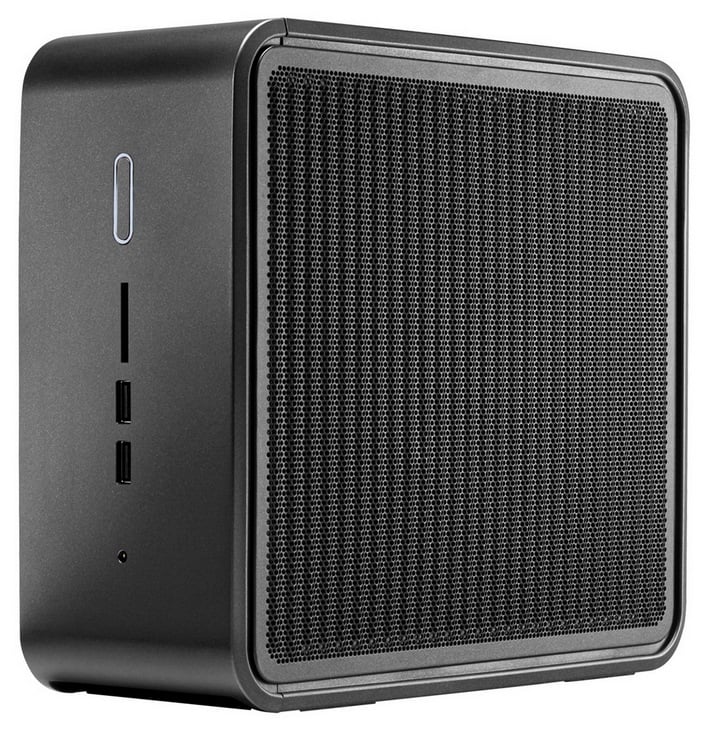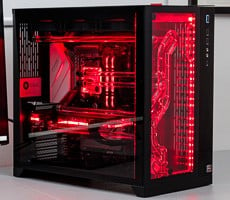Intel NUC 9 Extreme Ghost Canyon Review: Pint-Sized Powerhouse
|
In the relatively light-duty Night Raid benchmark (which we normally only run on notebooks), the Intel NUC 9 Extreme and its GeForce RTX 2070 leads the pack by a wide margin. Of course, it should, considering it features the most powerful discrete GPU of the bunch.

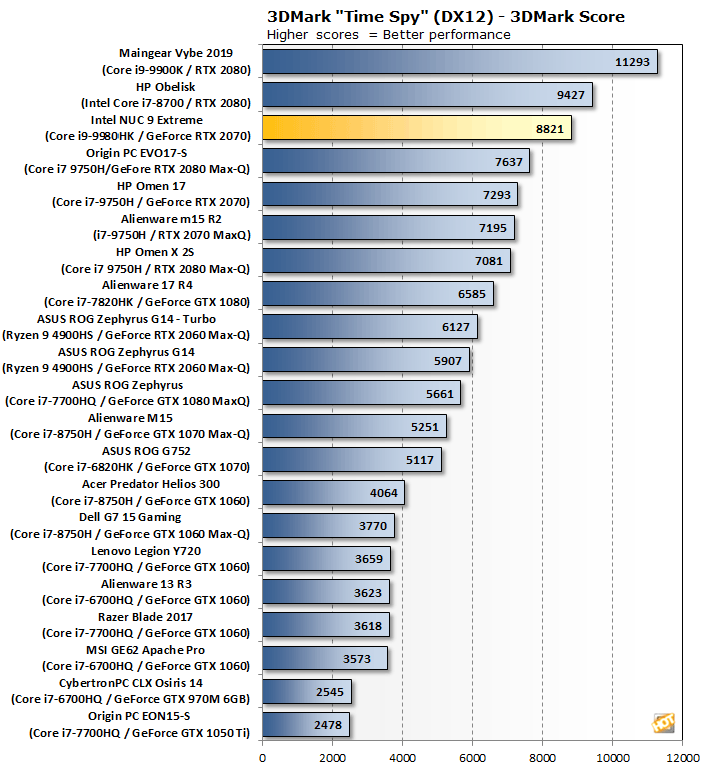
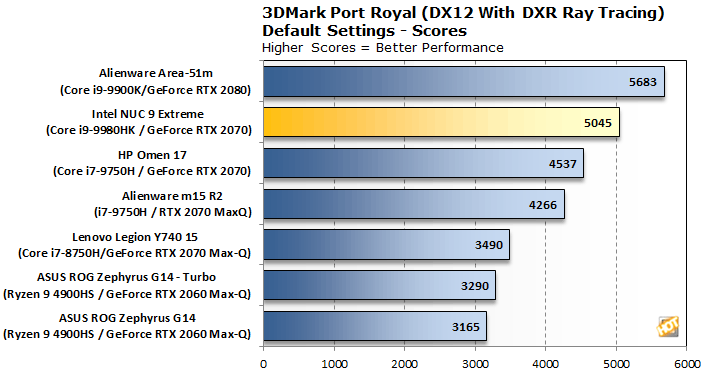
|
With our synthetic testing out of the way, this is where the rubber meets the road—actual games. Though is it relatively small, the Intel NUC 9 Extreme is well-equipped for gaming with such a powerful processor and GeForce RTX-class GPU. Here's how things shook out...
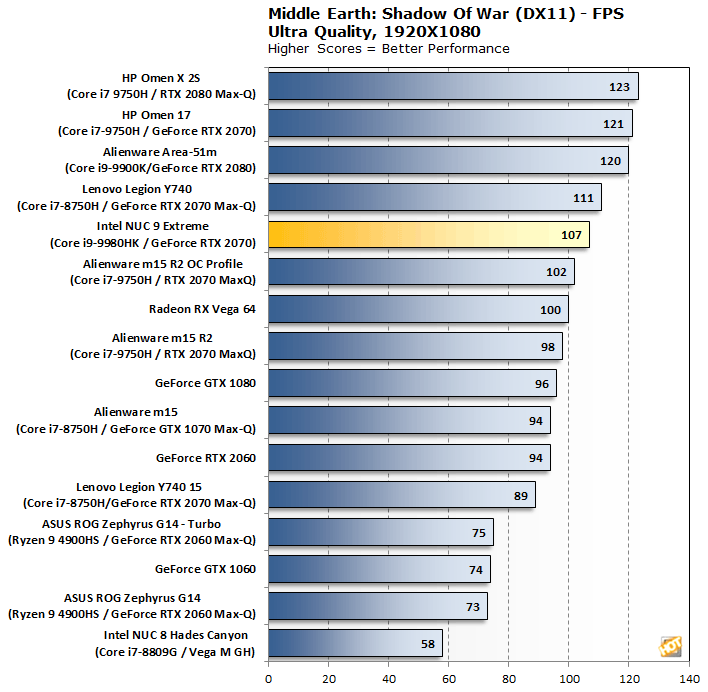
Although it performed well and landed in the upper quadrant of systems, the Intel NUC 9 Extreme with GeForce RTX 2070 performed slightly lower than expected in Shadow Of War. The system was still in the mix with others featuring GeForce RTX 2070s and 2080s, but was ultimately a few frames per second behind. Notice at the bottom of the chart you'll find the previous-gen NUC 8 with integrated Radeon Vega graphics. Though that system is very powerful for its size, there's simply no matching a discrete, high-end GPU for gaming.
|
The finale in the rebooted Tomb Raider trilogy, "Shadow of the Tomb Raider," is easily the best-looking of the bunch. It's also brimming with Tobii eye-tracking hardware support, and leading edge graphics technologies. To test this game out, we again turned the visuals up to High and tested at the full-HD resolution of 1920x1080.
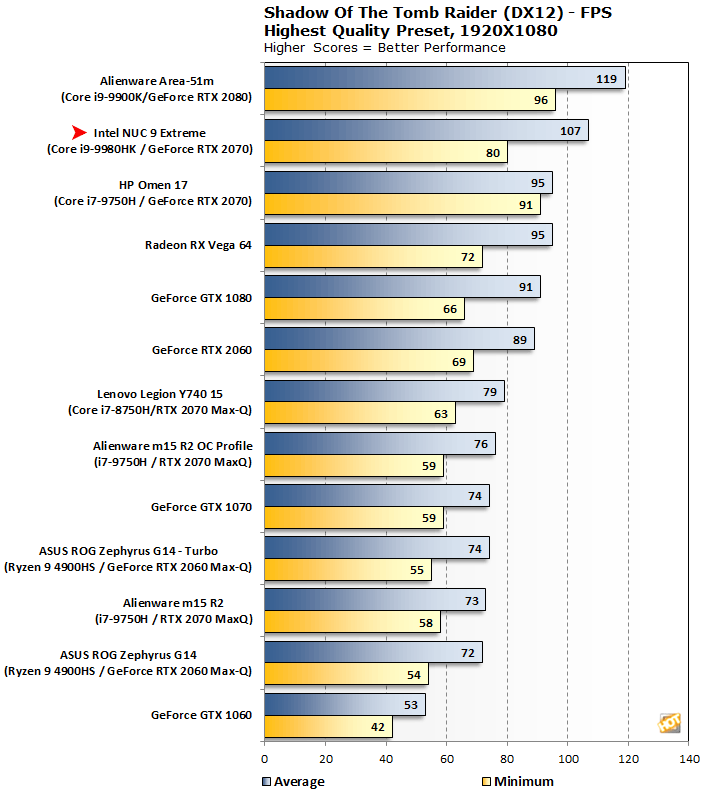
|
Throughout all of our benchmarking and testing, we also monitored how much power our Intel NUC 9 Extreme test system was consuming with a power meter, versus some of the other desktop systems we used for benchmark comparisons.
Our goal was to give you an idea as to how much power each configuration used while idling at the Windows desktop and while under a heavy CPU workload. Keep in mind, this is total system power consumption being measured at the outlet and not the the individual power of the CPUs alone.

Despite its relatively strong performance, the Intel NUC 9 Extreme is a somewhat power-friendly little beast. When hammering on the CPU, at full load, the system pulls only 117 watts. While idling, the Intel NUC 9 Extreme pulls only 33 watts, with only the previous-gen NUC 8 coming in lower.

We also monitored power in a gaming scenario to see how the discrete GPU affected things. As you can see, firing up the GeForce RTX 2070 more than doubles the system's peak power.
Intel NUC 9 Extreme Cooling And Acoustics
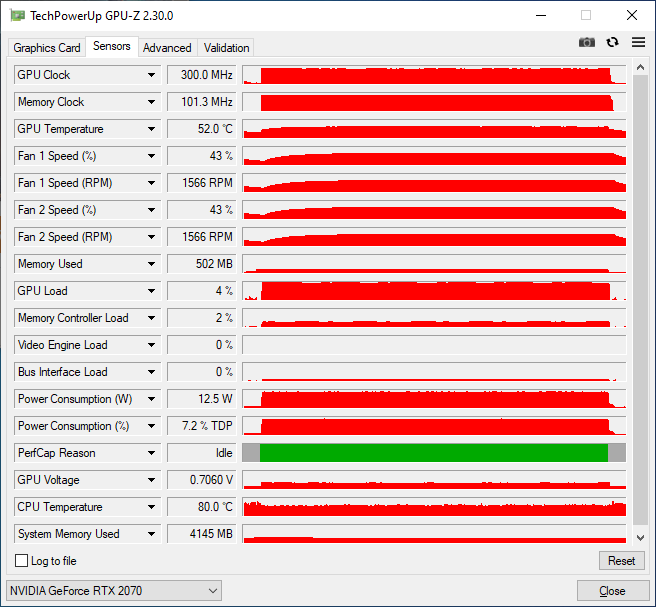
After hours of benchmarking, and 20 consecutive loops of 3DMark's Time Spy stress test, this is what CPU and GPU temperatures and fan speeds looked like. The CPU temp will peak into the 90s for short stints, but the GPU runs nice and cool -- having access to outside air right though the mesh side panel helps GPU temperatures stay nice and low.
The Intel NUC 9 Extreme with the particular ASUS GeForce RTX 2070 we have installed is very quite under normal desktop use and doesn't register on our sound meter, above the typical ambient noise (the GPU fans don't even spin when the system is idling). Under a sustained load, however, when both the CPU and GPU fans are cranking, the system is clearly audible and broke the 50dB mark on our meter, when placed about a foot away from the side panel. Although that's not quiet, and the fans are more audible when they would be in a closed mid-tower, we wouldn't consider the Intel NUC 9 Extreme, as we had it configured, to be particularly loud. And its fan pitch wasn't irritating (to us) either.
Final Thoughts On The Intel NUC 9 Extreme
We have always been fans of small form factor (SFF) systems. As much as we love a big, beefy full tower, packed to the gills with powerful hardware, that's not practical for everyone and there's just something about a full-featured, tiny rig that's attractive. For most users, a small form factor system also offers more than enough horsepower for their daily computing needs, even if the system may lack some of the expansion possibilities of a full-sized desktop.The Intel NUC 9 Extreme is a different sort of animal, though. It may be an SFF, and in its current form, may feature a mobile CPU, but the Core i9-based version of the system we tested is quite powerful, especially when stacked with a GeForce RTX-class discrete GPU. Although we tested this petite rig with a discrete GeForce card, keep in mind that the Intel NUC 9 Extreme does have an iGPU as well -- the discrete GPU is optional.
So, with the Intel NUC 9 Extreme, you get a relatively small system, roughly half the size of what a do-it-yourselfer could build with off-the-shelf mini-ITX parts (if they wanted to incorporate a discrete GPU). And the Intel NUC 9 Extreme's modular design allows for a couple of expansion slots, and a trio of M.2-bases storage solutions. All told, you could assemble a quite powerful little beast of a gaming and content creation PC with the Intel NUC 9 Extreme -- but (there's always a but), it comes at a premium. The Intel NUC 9 Extreme (model NUC9i9QNX), without any components or accessories will sell for about $1,639. Add in the GPU, memory, storage, and an OS, and you're easily north of $2,000. There is no denying that you can assemble a somewhat larger mini-ITX system, perhaps with better performance, for potentially much less. Intel's long-term support for the NUC 9's compute module is also required to ensure an upgrade path. Intel assures us they have ecosystem partners lined up and they're planning to support the design for the foreseeable future, but if the design doesn't resonate in the market, who knows what'll happen down the line.
As it stands today, the Intel NUC 9 Extreme is a really cool product, that brings powerful hardware and a bit of DIY flavor into an attractive, compact form factor. There is a premium to be paid to play with a system of this type, but if the idea of a high-performance small form factor system is appealing to you, the Intel NUC 9 Extreme is an innovative solution that worthy of your consideration.

 |
 |
||
|
|


